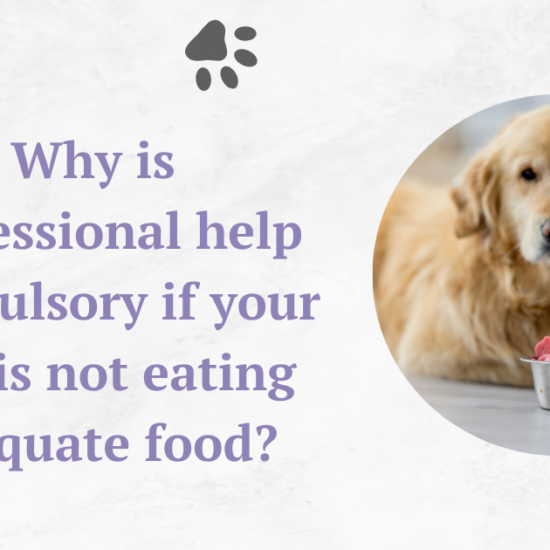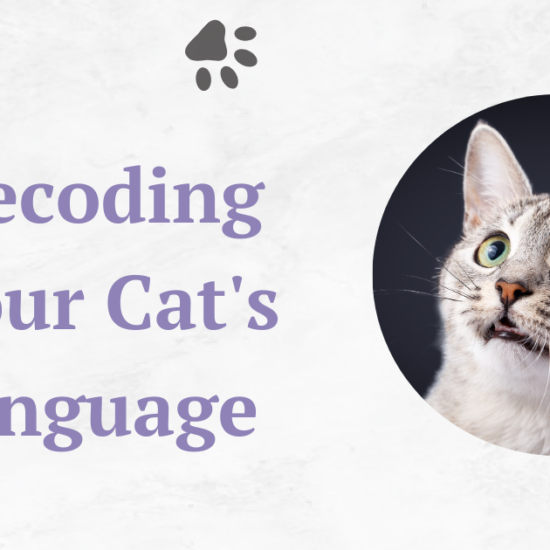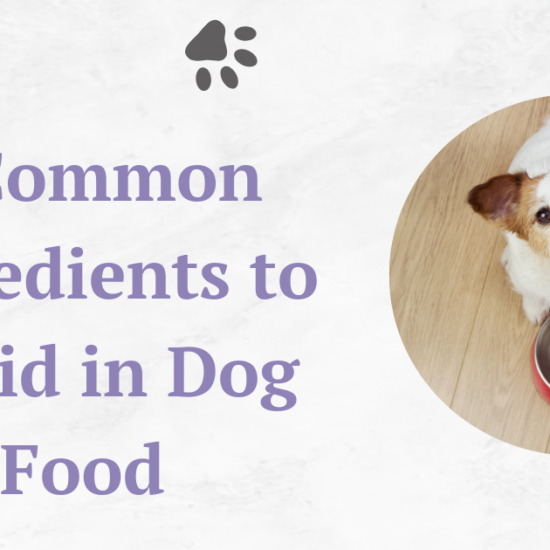Obesity is a worldwide public health problem that affects not just humans but also our beloved pets. The rising frequency of obesity in dogs is a serious concern that requires immediate action. This comprehensive article examines the numerous elements of pet obesity, including its causes, consequences, prevention, and management.
Table of Contents
Introduction
Through a detailed review of what constitutes obesity in pets, including eating habits, exercise routines, genetic predisposition, and other factors, this article intends to shed light on the importance of responsible pet ownership and the role veterinarians and pet owners play in ensuring the health and well-being of our furry companions.
What is Obesity in Pets?

Obesity in pets is described as an abnormal accumulation of body fat that endangers their health and lowers their quality of life. Pets, like humans, can suffer from the repercussions of being overweight, which can cause a variety of health problems and shorten their lives.
Severity of Obesity in Pets
The obesity pandemic has recently spread to our dogs. Overweight and obese pets are becoming more common in a variety of species, including dogs, cats, and even small animals like rabbits and guinea pigs, according to research. This essay will look at the elements that contribute to this epidemic and emphasize the significance of tackling it in order to improve the general health of our beloved pets.
The goal of this article is to provide a complete overview of pet obesity, including its causes, health repercussions, and effective prevention and management. We can work together to prevent rising rates of pet obesity and secure a healthier, happier future for our four-legged companions by raising awareness and supporting responsible pet ownership.
Major Causes of Pet Obesity

Let us have a glance at some of the most prominent causes of obesity in pets.
- Overfeeding and Poor Diet Selection
Overfeeding, whether in terms of amount or excessive rewards, is a major cause of pet obesity. Pet owners frequently show their devotion to their pets by giving them goodies, but these gestures might lead to an imbalance in caloric intake. Furthermore, bad dietary choices, such as giving high-calorie human food to pets, contribute to weight gain and nutrient shortages.
- Inactivity and Sedentary Lifestyles
Pets, like humans, require regular physical activity to stay in shape. Many pets, particularly those that live in cities or are restricted inside, do not get enough exercise. Sedentary lives with few opportunities to play might result in weight gain and muscle atrophy.
- Genetic Factors and Breed Predisposition
Certain breeds are genetically predisposed to obesity. Obesity is more common in Labrador Retrievers, Beagles, and Dachshunds than in other breeds. Because genetic variables influence metabolism, hunger management, and fat accumulation, some pets are more prone to weight gain than others.
- Hormonal and Age-Related Changes
The age might also cause obesity problems in pets. Pets’ metabolic rates tend to decline as they age, and they may become less active. Hormonal changes, such as those seen in unneutered animals, can have an impact on appetite and body composition.
- Human-Animal Bonding and Owner Behavior
The human-animal link is a powerful and wonderful component of pet ownership, but when emotions are involved, it can contribute to obesity. Some pet owners may unknowingly use food to express love and affection for their pets, resulting in emotional eating. Furthermore, pet owners who lead sedentary lifestyles may unintentionally pass on these habits to their dogs.
Obesity’s Health Consequences

Obesity problems in pets can cause a variety of health issues, many of which are comparable to those encountered by fat humans. The following are some of the most common health consequences:
- Cardiovascular Problems
Excess body fat places additional strain on a pet’s heart, increasing the risk of hypertension, heart disease, and heart failure. These ailments can have a substantial influence on a pet’s quality of life and longevity.
- Joint and Mobility Issues
Obese pets are more prone to joint disorders, such as arthritis and ligament injuries, because their bones and joints are under more strain. Mobility difficulties can cause pain and limit their freedom of movement.
- Difficulty in Breathing
Pets who are overweight may have difficulty breathing, especially brachycephalic breeds (e.g., Bulldogs and Pugs), which are vulnerable to respiratory disorders.
- Diabetes Mellitus
Diabetes mellitus is more likely to occur in obese pets. This disorder can result in a variety of complications, such as organ damage, nerve problems, and decreased wound healing.
- Decreased Lifespan and Quality of Life
Obesity drastically shortens a pet’s lifespan, lowering the number of years they may spend with their owners. Furthermore, overweight pets may have a lower overall quality of life due to discomfort and diminished physical ability.
Identifying Obesity in Pets
It is critical for pet owners to understand the indicators of obesity in their pets in order to take appropriate action. Among the approaches for identifying obesity in pets are:
- Body Condition Evaluation
A body condition score is a popular method for determining a pet’s body fat and overall health. The body condition score (BCS) of a pet is determined by veterinarians using a scale of 1 to 9, with 1 being malnourished and 9 being obese. For most pets, a BCS of 4 to 5 is considered optimal.
- Growth Curves and Weight Charts
Monitoring a pet’s weight on a regular basis with weight charts and growth curves aids in identifying trends and deviations from a healthy weight. Weight tracking can help identify obesity in pets at earlier stages.
- Veterinary Assessment and Diagnosis
A veterinary evaluation is required if a pet owner feels their pet is overweight or obese. A thorough checkup, including blood testing and other diagnostic tests, can be performed by a veterinarian to assess overall health and rule out any underlying obesity problems in pets.
Tips for Preventing Pet Obesity

Obesity prevention in pets necessitates a proactive attitude on the part of pet owners. Pet owners can dramatically lower the chance of their furry friends getting overweight by adopting healthy living practices. Among the most important preventative techniques are:
- Nutrition and Feeding Practices That Work
It is critical to feed pets a balanced and healthy diet in order to keep their health and weight in check. Pet owners should provide their pets with high-quality food that is appropriate for their pet’s age, breed, and activity level. Feeding regimens should be regular, and portion amounts should be calculated based on the unique needs of the pet.
- Portion Control and Treatment Administration
Portion control is essential for avoiding overeating and obesity problems in pets. Feeding rules and avoiding free feeding can help control a pet’s calorie intake. Furthermore, when providing treats, owners should be cautious of their calorie content and seek healthier alternatives, such as small quantities of fruits or vegetables.
- Regular Physical Activity and Exercise
Regular exercise is essential for a pet’s overall well-being and aids in the maintenance of a healthy weight. Daily walks, games, and interactive toys not only help burn calories and prevent obesity problems in pets, but they also enhance the bond between pets and owners.
- Mental Stimulation and Behavioral Enrichment
Mental stimulation provided through interactive toys, puzzles, and training sessions can help minimize boredom-related eating and promote a healthier lifestyle. Mental enrichment might be especially beneficial for indoor pets that don’t get enough physical activity.
Tips for Managing Obesity in Pets

If a pet is already overweight or obese, it is critical to address the problem as soon as possible. Obesity management necessitates a multifaceted strategy that includes collaboration between pet owners and veterinary specialists. Some tips for managing obesity in pets include:
- Developing a Weight Loss Strategy
Veterinarians are crucial in establishing personalized weight loss strategies for obese pets. These regimens may include a specified diet, an exercise regimen, and periodic evaluations of the pet’s development.
- Role of Veterinary Professionals
Veterinary specialists can offer significant advice and support throughout the weight loss process. They may provide prescription meals, nutritional advice, and appropriate exercise routines customized to the pet’s needs.
- Collaboration and Monitoring are important.
Weight loss in pets involves ongoing coordination between the pet owner and the veterinarian. Regular weight, body condition, and overall health monitoring is required to track success and change the weight loss plan as needed.
- Overcoming Obstacles and Plateaus
Weight loss for pets can be difficult, and they may have plateaus or setbacks along the way. Patience and consistency are essential as owners and veterinarians collaborate to develop successful techniques for overcoming difficulties and advancing obesity problems in pets.
Obesity and the Human-Animal Bond

The relationship between pets and their owners is a unique and powerful one that has a considerable impact on pet behavior and well-being. However, striking a balance between providing compassion and maintaining a healthy lifestyle for pets is critical. Considerations for a healthy human-animal bond and obesity prevention include:
- Emotional Feeding and Poor Habits
Pet owners should avoid using food to console or demonstrate love for their animals. Emotional feeding can lead to bad eating habits and cause pet obesity.
- The Influence of Owner Lifestyle on Pet Health
Pet owners should consider their own lifestyle choices and how they may impact their dogs. If an owner follows a good diet and exercise program, their pet is more likely to follow suit.
- Incentives for Positive Interactions and Activity
Instead of depending entirely on goodies for positive reinforcement, pet owners can reward good behavior with praise, caressing, and interactive play. This method encourages physical activity while also strengthening the link between pets and their owners
Considerations for Specific Breeds

When managing obesity in pets, it is critical to consider breed-specific traits. Different breeds have different nutritional needs and may confront unique weight management difficulties.
- Respiratory Problems in Brachycephalic Breeds
Because of their short noses and flat faces, brachycephalic breeds such as Bulldogs, French Bulldogs, and Pugs are prone to respiratory difficulties. Obesity exacerbates these problems by putting more burden on their already strained respiratory systems.
- Large Breeds and Orthopedic Difficulties
Large dog breeds, such as Great Danes and Saint Bernards, are prone to orthopedic issues such as hip dysplasia and arthritis. Maintaining a healthy weight is essential for decreasing joint stress and preventing long-term mobility difficulties.
- Small Breeds and Their Nutritional Needs
Small dog breeds with greater metabolic rates, such as Chihuahuas and Toy Poodles, may require fewer calories than larger types. Owners should be careful not to overfeed little dogs, as they are more prone to becoming overweight or obese.
Popular Myths and Misconceptions

There are numerous myths and misconceptions about pet obesity. Clarifying these myths is critical for spreading factual information and improving pet health.
- Weight Gain and Sterilization
It is widely assumed that spaying or neutering pets cause weight gain. While hormonal changes can have an effect on appetite and metabolism, the greatest cause of weight gain following sterilization is usually overeating and a lack of exercise.
- Metabolism in Senior Pets
Although senior pets’ metabolisms may fluctuate, aging is not the primary cause of obesity. Adapting an older pet’s food and exercise routine to their changing demands is critical for maintaining a healthy weight.
- Diet Foods and Effective Weight Loss
Not all “diet” pet foods are made equal, and some may not support weight management adequately. It is critical for success to consult with a veterinarian to select an appropriate weight management diet tailored to the specific pet.
The Role of the Food Industry in Managing Pet Obesity

The pet food sector is important in the prevention and management of pet obesity. Responsible practices and consumer education can help dogs make better choices.
The pet food industry should concentrate on developing pet diets that adhere to strict nutritional criteria and provide precise feeding recommendations. Age, breed, activity level, and health state should all be considered in these criteria.
- Marketing and Public Awareness
Pet food marketing should emphasize the health benefits of proper feeding and nutrition. Educating pet owners about quantity control, feeding rules, and the dangers of overfeeding can help improve pet diets.
- Ethical Issues and Responsible Advertising
Pet food makers should prioritize pet health and avoid deceptive marketing practices. Responsible advertising should promote the nutritional value of items without encouraging excessive consumption.
The Evolution of Pet Obesity

Continued research, technological improvements, and increased awareness will shape the future of pet obesity prevention and management.
- Pet Nutrition Research and Advancements
Ongoing pet nutrition research can provide significant insights into the best methods for pet weight management. Breed-specific requirements, the influence of certain components, and unique nutritional solutions can all drive advancement in the sector.
- Obesity Management Technology
Wearable devices and smart feeding systems, for example, can help monitor pet activity levels and food consumption. These technologies can provide useful information to pet owners and doctors, allowing for more successful weight-management techniques.
- Campaigns for Education and Awareness
Pet obesity must be combated through education and awareness initiatives. Veterinary organizations, animal welfare organizations, and pet food manufacturers can work together to increase awareness about the dangers of pet obesity and encourage responsible pet ownership.
FAQs
What constitutes obesity in pets?
Obesity in dogs is described as an abnormal accumulation of body fat that causes health problems and lowers their quality of life. Body condition scoring is used to diagnose this disorder, with 1 indicating emaciation and 9 indicating obesity.
Is pet obesity a serious issue?
Pet obesity is a growing concern. Overweight and obese pets, including dogs, cats, and small animals like rabbits and guinea pigs, are on the rise, which can lead to a variety of health problems.
What is the objective of this article?
The goal of this article is to provide a complete overview of pet obesity, including its causes, health repercussions, and effective prevention and management. The purpose is to promote ethical pet ownership and create awareness about the need for pet obesity prevention.
What are the key causes of pet obesity?
Overfeeding, poor diet choices, lack of exercise, breed predisposition, age-related changes, and emotional feeding owing to the strong human-animal attachment can all contribute to pet obesity.
What are some of the health consequences of pet obesity?
Obesity in pets can cause cardiovascular problems, joint problems, respiratory problems, diabetes, and a shortened lifespan with a lower overall quality of life.
How can I tell if my pet is obese?
Body condition grading, weight charts, and growth curves can be used to detect obesity in pets. If you feel your pet is overweight, you should consult with a veterinarian for a comprehensive evaluation.
What are some preventative methods for pet obesity?
Pet owners should focus on providing adequate nutrition, practicing portion control, engaging in regular exercise, and providing behavioral enrichment and mental stimulation to prevent obesity.
How can I effectively manage obesity in my pet?
Managing obesity in pets necessitates a veterinary-created weight loss plan. This plan may involve a particular food, an exercise routine, and regular monitoring of the pet’s development.
Can breed-specific issues influence pet obesity?
Different breeds have distinct nutritional needs and may be more sensitive to obesity-related health concerns. For example, brachycephalic breeds may have respiratory issues, whereas huge breeds may have orthopedic issues.
How does the pet food sector contribute to the fight against pet obesity?
The pet food industry plays an important role in providing accurate feeding recommendations and formulating pet diets that fulfill specific nutritional criteria. Ethical advertising and promoting the health advantages of proper nutrition are also critical in the fight against pet obesity.
Conclusion
Pet obesity is a complex and developing problem that requires the attention and action of pet owners, veterinarians, and the pet food industry. Combating pet obesity requires responsible pet ownership, informed decision-making, and a commitment to providing adequate nutrition and regular exercise. We can ensure that our four-legged friends live healthy, happy lives free of the burden of obesity by working together.












